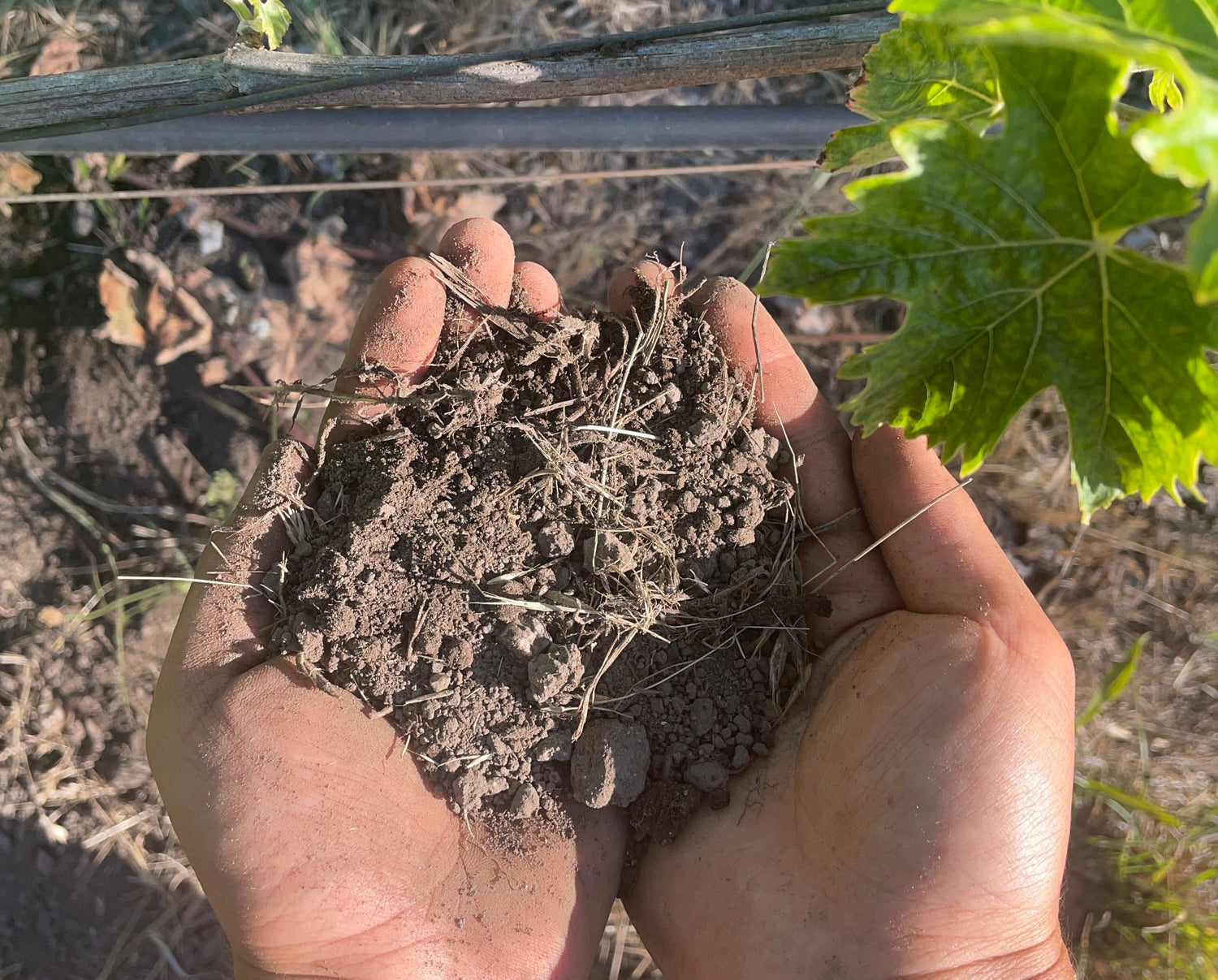Healthy lawn soil provides the foundation for lush, green grass by supplying proper nutrition, drainage, and growing conditions. Understanding your soil's pH, nutrient levels, and organic matter content through testing enables targeted improvements that address common lawn problems like brown spots, thin growth, or poor color.
Lawn Soil Testing Guide: Complete pH, Nutrient & Health Analysis
Effective lawn soil testing involves analyzing soil pH (6.0-7.0 optimal), essential nutrients including nitrogen, phosphorus, and potassium, organic matter content (3-5% target), soil texture and compaction, and micronutrient levels to create ideal growing conditions for healthy grass.
Understanding Why Lawn Soil Testing Matters
Soil testing reveals the underlying causes of common lawn problems that visual inspection alone cannot identify. Poor grass growth, uneven color, and disease susceptibility often stem from soil imbalances rather than surface issues.
Nutrient deficiencies or imbalances affect grass health even when other growing conditions appear optimal. Testing identifies specific deficiencies that targeted fertilization can address more effectively than generic lawn fertilizers.
Soil pH significantly impacts nutrient availability to grass roots. Even when nutrients are present in soil, incorrect pH can prevent grass from accessing them, leading to deficiency symptoms despite adequate fertilization.
Environmental protection benefits from soil testing by preventing over-fertilization that can contribute to water pollution through nutrient runoff. Precise fertilization based on actual soil needs reduces environmental impact.
Essential Lawn Soil Parameters
Soil pH: Foundation of Nutrient Availability
Soil pH controls how readily grass can access soil nutrients. Most lawn grasses thrive in slightly acidic to neutral soil (pH 6.0-7.0) where nutrients remain available for root uptake.
Acidic soils (below pH 6.0) can limit phosphorus availability and may indicate aluminum toxicity concerns. Alkaline soils (above pH 7.5) often restrict iron and other micronutrient uptake, causing yellowing or chlorosis.
pH testing provides the foundation for all other soil management decisions, as correcting pH problems often resolves apparent nutrient deficiencies.
Primary Nutrients for Grass Health
Nitrogen promotes leaf growth and green color, making it the most important nutrient for lawn appearance. Grass requires regular nitrogen applications due to its mobility in soil and rapid plant uptake.
Phosphorus supports root development and energy transfer within grass plants. While less mobile than nitrogen, adequate phosphorus becomes crucial during establishment and root development periods.
Potassium enhances stress tolerance, disease resistance, and overall grass health. This nutrient helps grass withstand drought, cold, and traffic stress.
Secondary Nutrients and Micronutrients
Calcium supports cell wall formation and soil structure, while magnesium serves as the central component of chlorophyll molecules essential for photosynthesis.
Iron deficiency commonly causes yellowing in lawn grass, particularly in alkaline soils where iron becomes less available to plant roots.
Other micronutrients including zinc, manganese, and sulfur play specific roles in grass metabolism and may become limiting factors in certain soil conditions.
| Soil Parameter | Optimal Range for Lawns | Function in Grass Health |
|---|---|---|
| pH | 6.0-7.0 | Controls nutrient availability and microbial activity |
| Nitrogen (N) | 20-40 ppm | Promotes leaf growth and green color |
| Phosphorus (P) | 15-30 ppm | Supports root development and energy transfer |
| Potassium (K) | 100-200 ppm | Enhances stress tolerance and disease resistance |
| Organic Matter | 3-5% | Improves soil structure and nutrient retention |
| Iron (Fe) | 4-20 ppm | Essential for chlorophyll formation and green color |
Proper Soil Sampling Techniques
Planning Your Sampling Strategy
Divide your lawn into areas with similar conditions including grass type, sun exposure, drainage, and management history. Sample different areas separately if they show different performance or appearance.
Timing affects soil test accuracy. Sample during active growing seasons when grass is utilizing nutrients. Avoid sampling immediately after fertilizer application or during drought stress.
Sample size should represent the area being tested. For uniform areas up to 5,000 square feet, one composite sample provides adequate representation.
Sample Collection Procedures
Use clean tools to collect samples from 4-6 inches deep, the primary root zone for most lawn grasses. Take 10-15 individual samples in a random or grid pattern across the area.
Remove surface debris including thatch, leaves, and grass clippings before sampling. These materials can skew nutrient results and don't represent actual soil conditions.
Mix individual samples thoroughly in a clean container to create a representative composite sample. Remove about one cup of mixed soil for laboratory analysis.
Label samples clearly with location, date, and grass type to help interpret results and track changes over time.
Seasonal Considerations
Cool-season grasses like fescue, bluegrass, and ryegrass should be tested in early spring or fall when these grasses are actively growing and utilizing nutrients.
Warm-season grasses including bermuda, zoysia, and centipede grass are best tested in late spring through early summer during their peak growing period.
Avoid sampling during dormant periods when grass is not actively taking up nutrients, as results may not reflect growing season conditions.
Interpreting Soil Test Results
Professional soil test reports provide current nutrient levels, pH readings, and recommendations for amendments. Understanding how to interpret these results enables effective lawn care decisions.
Compare your results to optimal ranges for lawn grass rather than general gardening ranges. Lawn grass has specific nutrient requirements that may differ from other plants.
Consider the relationships between nutrients when interpreting results. High levels of one nutrient can interfere with uptake of others, requiring balanced amendment approaches.
Follow application timing recommendations in test results. Some amendments work best when applied during specific seasons or weather conditions.
Common Soil Problems and Solutions
pH Adjustment Strategies
Raise soil pH in acidic conditions using limestone applications. Calcitic limestone provides calcium, while dolomitic limestone adds both calcium and magnesium.
Lower soil pH in alkaline conditions using elemental sulfur or iron sulfate. Sulfur provides gradual, long-lasting pH reduction through biological processes.
pH adjustment takes time, often requiring multiple growing seasons to achieve target levels. Test annually during pH correction programs to monitor progress.
Nutrient Management
Nitrogen applications should match grass growth patterns and environmental conditions. Split applications reduce leaching losses and provide consistent nutrition.
Phosphorus amendments may be restricted in some areas due to environmental concerns. Follow local regulations and apply only when soil tests indicate deficiency.
Potassium applications improve stress tolerance and should be timed before stress periods like summer heat or winter cold.
Organic Matter Enhancement
Increase organic matter through regular compost applications, leaving grass clippings on the lawn, and overseeding with appropriate grass varieties.
Core aeration helps incorporate organic matter into soil and reduces compaction that limits root growth and nutrient uptake.
Avoid excessive thatch buildup that can interfere with water and nutrient movement to grass roots.
Regional Lawn Soil Considerations
Cool Humid Regions
Northern and northeastern regions often have acidic soils that require lime applications to maintain optimal pH for grass growth. Regular testing helps monitor pH trends.
Clay soils common in these regions may need drainage improvements and organic matter additions to prevent compaction and improve root growth.
Shorter growing seasons require concentrated nutrient management during active growth periods.
Warm Humid Regions
Sandy soils prevalent in southeastern regions require frequent, light fertilizer applications to prevent nutrient leaching during heavy rainfall periods.
High rainfall can accelerate nutrient loss, particularly nitrogen, requiring adjustment of fertilization programs based on local precipitation patterns.
Organic matter decomposes rapidly in warm climates, requiring regular additions to maintain soil structure and nutrient retention.
Arid and Semi-Arid Regions
Western regions often have alkaline soils that limit iron and other micronutrient availability. Chelated fertilizers or soil acidification may be necessary.
Salinity problems can develop in areas with poor drainage or high-salinity irrigation water. Soil testing should include salinity assessment in these regions.
Water conservation requires matching grass types to local soil conditions and adjusting fertilization to support efficient water use.
Lawn Care Based on Test Results
Develop fertilization programs based on actual soil nutrient levels rather than generic recommendations. This approach optimizes grass health while minimizing environmental impact.
Time applications according to grass growth patterns and local climate conditions. Split applications often provide better results than single large applications.
Monitor grass response to soil amendments and adjust programs based on observed performance and follow-up soil tests.
Integrate soil health practices including aeration, overseeding, and organic matter additions with chemical amendments for comprehensive lawn improvement.
Maintenance and Monitoring
Schedule regular soil testing every 2-3 years for established lawns to track nutrient trends and soil health changes over time.
Test annually if implementing major soil improvement programs or experiencing persistent lawn problems that require ongoing monitoring.
Keep records of soil test results, amendments applied, and grass performance to identify successful strategies and guide future management decisions.
Adjust management practices based on changing conditions including weather patterns, irrigation changes, or lawn usage modifications.
Frequently Asked Questions
What is the ideal soil pH for lawns?
The ideal soil pH for most lawn grasses is 6.0-7.0, which allows optimal nutrient availability and healthy root development. This range supports both cool-season and warm-season grasses.
How often should I test my lawn soil?
Test lawn soil every 2-3 years for established lawns, or annually if you're experiencing persistent problems like brown spots or poor growth. New lawns should be tested before establishment.
What causes brown spots in lawn grass?
Brown spots in lawns can result from nutrient deficiencies, incorrect soil pH, compacted soil, disease, or drought stress. Soil testing helps identify and correct underlying soil-related causes.
When is the best time to test lawn soil?
Test cool-season grasses in early spring or fall, and warm-season grasses in late spring to early summer. Avoid testing during dormancy or immediately after fertilizer applications.
How do I collect a soil sample from my lawn?
Take 10-15 samples from 4-6 inches deep across your lawn area, remove debris, mix thoroughly, and submit about one cup of the composite sample to a laboratory.
Why is my grass yellow despite fertilizing?
Yellow grass despite fertilization often indicates pH problems, iron deficiency, or nitrogen deficiency. Soil testing reveals the specific cause and guides appropriate treatment.
Can I use a home soil test kit for my lawn?
Home test kits provide basic information but professional laboratory analysis offers more accurate and comprehensive results for effective lawn management decisions.
How long does it take to see results from soil amendments?
Results vary by amendment type. Quick-release fertilizers show effects within weeks, while pH adjustments and organic matter improvements may take months to full growing seasons.
Conclusion
Lawn soil testing provides the scientific foundation for effective grass management by revealing the specific soil conditions that support healthy turf growth. Understanding soil pH, nutrient levels, and organic matter content enables targeted improvements that address the root causes of lawn problems rather than just treating symptoms. Through proper sampling techniques, professional analysis, and interpretation of results, homeowners can develop precise lawn care programs that optimize grass health while minimizing environmental impact. Regular soil testing, combined with appropriate amendments and maintenance practices, creates the ideal growing environment for lush, resilient lawns that thrive in local soil and climate conditions. Success comes from matching management practices to actual soil needs rather than following generic recommendations, resulting in healthier grass and more sustainable lawn care practices.
Sources
- USDA Natural Resources Conservation Service. Soil Health Assessment for Turf Management. https://www.nrcs.usda.gov/resources/guides-and-instructions/soil-health
- University Extension Services. Turfgrass Soil Management Guidelines. https://extension.org/
- EPA Nutrient Management. Preventing Nutrient Pollution from Lawn Care. https://www.epa.gov/nutrientpollution
- Soil Science Society of America. Professional Soil Testing Standards. https://www.soils.org/
- Turfgrass Water Conservation Alliance. Soil-Based Water Management. https://www.tgwca.org/
- American Society of Agronomy. Turfgrass Nutrition Research. https://www.agronomy.org/
- International Turfgrass Society. Soil Management Best Practices. https://www.turfsociety.com/
- Rodale Institute. Organic Soil Health for Sustainable Turf. https://rodaleinstitute.org/science/soil-health/












